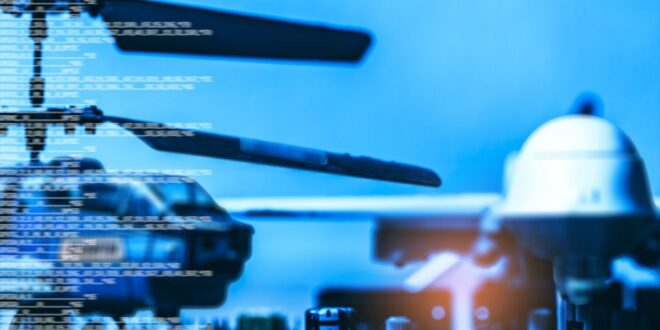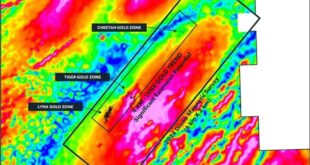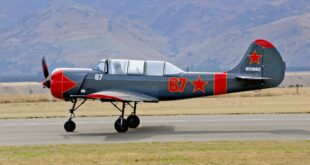Cohort, a leading technology group, discussed some of its latest defence solutions in an exclusive, ahead of the Defence and Security Equipment International (DSEI) 2023 exhibition that will take place in September.
While the parent company discussed its progress in the current defence market and how far its businesses come together, its independent, subsidiary companies: CHESS, EID, ELAC, MASS and SEA went into detail regarding some of their latest technology solutions, some of which will be showcased at London’s DSEI exhibition.
Cohort’s response to global defence needs
Cohort’s CEO, Andrew Thomis, gave some insight into how the group is ideally structured to meet the needs of defence in the current geopolitical environment.
“We have very strong capabilities in both the naval and land areas, and of those two it is the maritime that is the strongest.
“We’re providing some extremely capable equipment in northern Europe for surveillance and targeting, which is potentially a very important capability for land based systems. On the maritime side, we provide anti-submarine capability, anti-drone; anti-air target capability as well as the torpedo launchers, the decoy launchers – quite a comprehensive set of equipment.
“I think that ties in with the way that demand is going, because in Europe, we’re primarily talking about a land-based threat. And in the Indo-Pacific, we’re talking primarily about a sea-based threat – those capabilities are very important [right now].”
GlobalData intelligence affirms this growing demand as the global military land vehicles market value grows from $20.8bn to $31.3bn, while naval vessels swells from $44.2bn to $65.8bn over the next decade. The land domain is largely driven by European demand, where countries have been spurred into mobilisation since Russia’s invasion of Ukraine exposed its defence vulnerabilities. Naval market growth is down to American investment, as the US-China rivalry across the Indo-Pacific region intensifies.
Surveillance and tracking
At DSEI, CHESS will demonstrate one of its land-based ‘Hawkeye’ systems as well as one of its naval ‘Seaeagle’ systems.
The company concentrates on surveillance, accurate targeting multi sensor systems, and then our air defence applications. CHESS’ new electro-optical surveillance system provides four-dimensional oversight with its layered integration of different, modular systems.
“The key thing from the CHESS perspective is the modularity of the system. So you can have a range of vehicles that have different roles,” Dave Eldridge, Sales and Marketing Director at CHESS, stated. “They can be fitted with different sensors, spectral bands, thermal cameras, laser pointers – all those features.”
While the Hawkeye surveillance capability leverages highly ccurate data to allow users to paint a picture and monitor the battlespace from a safe position, the Seaeagle provides precision fire control with this electro-optical tracking capability, which directs numerous weapons and effectors for successful surface, shore and air engagements.
The electro-optical capability has built-in video tracking and target classification through Vision4ce’s CHARM modules and AI technology. Reducing the operational burden, the system effectively filters the information and only flags objects that are deemed genuine risks or threats to the operator.
GlobalData tells us that the global military ‘Electro-Optical and Infra Red Market’ was valued at $10.1bn in 2022, which it expects to reach $13.6bn by 2032. This 3.1% compound annual growth rate suggests CHESS’ adoption of electro-optics will soon be a coveted defence solution at land and sea.
Leveraging data on the battlefield
Meanwhile, MASS’ experts deliver software and training to defence organisations such as the UK Ministry of Defence. The company’s expertise allows customers’ data to work harder and disseminate rapidly, giving forces the edge.
At DSEI, MASS will be showcasing critical electronic warfare (EW) and cyber and electromagnetic activities (CEMA) capabilities.
MASS’s software, services and training can take forces from entry level EW and CEMA to a sophisticated joint operating model, including all-domain data management, mission planning, training and advanced countermeasures development.
“We’re all about people and data,” one MASS spokesperson stated. MASS brings together a forces’ toolsets to determine the force’s efforts into a comprehensive ‘Intelligence Cycle’.
“So first, at the beginning, we start with the ‘direction’ or the ‘planning’ piece, and we talk about our different systems. Next, what our ‘collections’ are all about, how are we utilising some of our tool sets?
Thirdly, there is the ‘processing’ phase: “What can we get out of the ‘processing piece? So this is where we do all the analysis. What are the different elements of processing and what that means.
Finally, the cycle ends with the ‘dissemination’ phase. “What are those outputs that we get from processing in this scenario that we’re using? Have we found something a little bit different from what we were expecting? What does that mean? It means that [what we have found] is now a threat. So therefore, that threat is being pushed back up to the commander to say, there’s a threat here and we’ve got some countermeasures.
“So if you do encounter that threat, you should be able to successfully cattle operation, even though that is sitting there where we found, okay, and that’s the whole process of using people and processes to go through the whole Intelligence Cycle.”
 Unmanned Aerial Vehicle The latest drone news
Unmanned Aerial Vehicle The latest drone news





